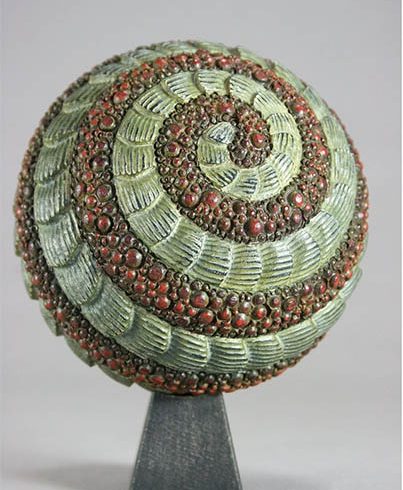
Through her sculptural work, Melissa Engler is trying to tell a story, “the story of the natural world, and of conservation, and trying to convey the preciousness of the natural world and the creatures that inhabit it.”
Partly, she wants to tell that story due to the influence of growing up in the Canadian Rockies, “so that feeling of the natural world being very close and very present, sacred, was a big part of my childhood.” Sculpture, she feels, is the best way for her to tell that story — incorporating some woodworking furniture making techniques along the way.
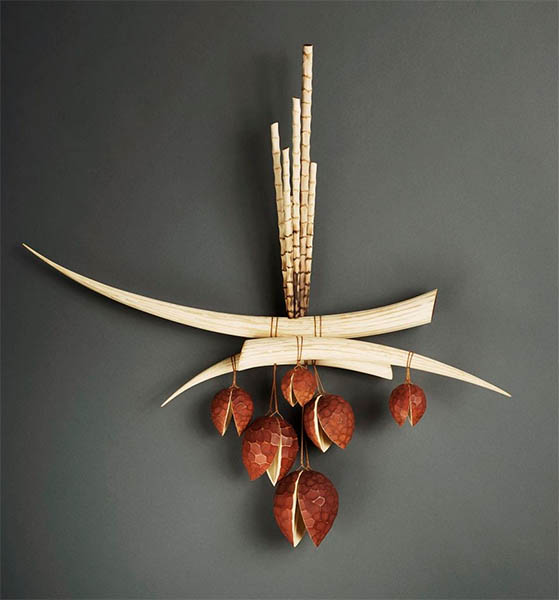
Melissa started out studying art as an undergraduate when she realized that a) she had a preference for making three-dimensional objects, b) she wanted to study this area further by delving into furniture making and c) the college she was attending didn’t have a furniture program.After switching to a community college for a few years to complete a professional craft program which focused on both hands-on and business instruction, Melissa returned to the original college to finish her degree by putting on her graduate show (the only requirement left for her).
“I was going to do a series of cabinets kind of based on the natural world and all my concerns about the natural world and wildness and extinction and things like this, and I was showing [advisor Brent Skidmore] these little sculpted handles that I was making for the cabinets, and Brent said, ‘What are you enjoying more, making the cabinets of making the little sculptural objects like the pulls and the handles?’ And I said, ‘Oh, the sculptural bit, of course.’”
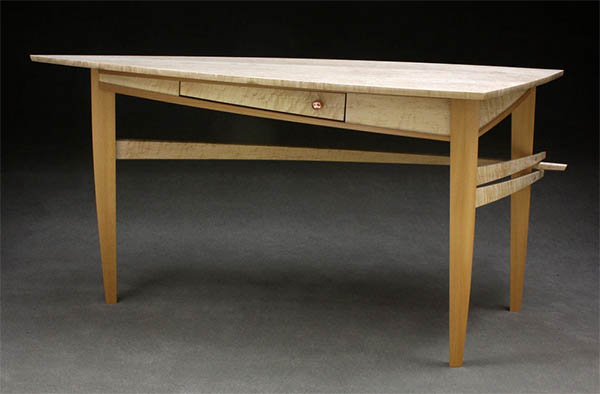
Her study of furniture making does continue to have an impact on her work, though, including both how she makes her pieces and her choice of materials. For her multi-piece assemblages, “There’s a real emphasis on making sure they’re put together well. It’s more of an additive process than a subtractive process: I don’t take a big chunk of wood and then carve it away until it’s what I want it to be; I take many small pieces, shape them, and then add them to each other to get a larger sculpture. I think that’s definitely more from a furniture making background than a sculpture background.”
As for her joinery choices, “I do a fair amount of pinning,” she said. Having started out with dowels, she now employs tiny metal rods for the same effect. “My concern for the cleanliness of the joins and all that goes back to the idea of craftsmanship that I got from being in a furniture program and understanding the way that things go together and when they’re properly together and when they’re not.”
And, of course, “Furniture making got me into wood.” Not only does she love wood as a material, Melissa said, but, I think it makes sense as far as the themes that I’m exploring to be using wood. I’m trying to keep the thesis going through the materials that I’m working with, not just the ideas.”
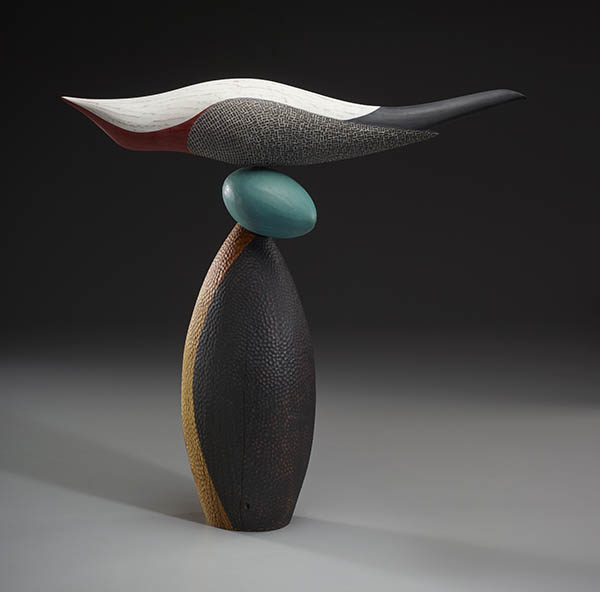
As she sources materials, “As best I can, I try to use things literally from my own backyard,” she said. When that’s not possible, Melissa still stays away from exotics and tries to stick to hardwoods easily found in North Carolina, where she lives.She also extends her eco-consciousness to her finish choices, which are essentially milk paint and acrylic paints, sometimes used in combination and sometimes separately, depending on the project. Sometimes, for instance, she might apply a layer of acrylic paint, with milk paint on top, and then wipe back the milk paint for an effect. “The acrylics are really pretty non-nasty in the scheme of things; the milk paints are really natural paint sources.”
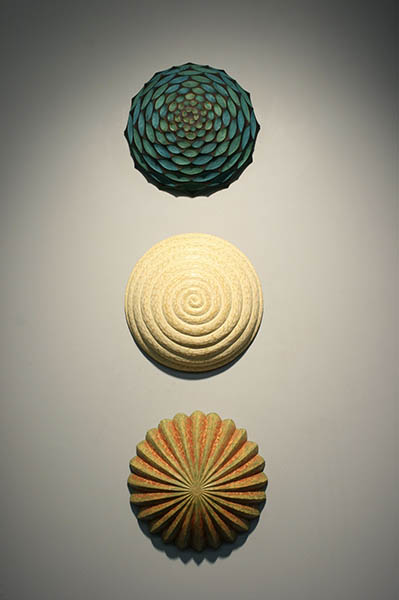
In addition to paint, the surface embellishments she applies to a piece might include carving or adding textures with a woodburning tool. That’s an aspect of the work that her husband, woodturner Graeme Priddle, also contributes to. “We work collaboratively a lot, and we teach collaboratively, so he handles the woodturning and then we both do the surface embellishing and stuff like that.” (The two will be teaching a class together on woodturning and surface embellishment at the Florida School of Woodwork in February 2019.)
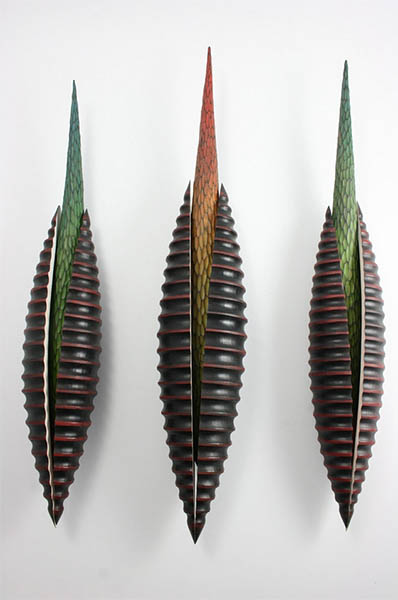
The two of them do work on collaborative pieces, as well, plus both continuing to pursue their individual artistic paths. “He may take a form off the lathe, but then we manipulate it and do lots of stuff to it afterwards so it ends up not looking as much like a lathe-turned form, and we both kind of play with that.” Or, “Sometimes I’ll request something, ‘Could you just turn me a quick sphere?’ and then I’ll do everything from that.” Or, for a lot of her individual work, Melissa said, “I create most of my forms off of my band saw and kind of refine them with sanding machines and rotary carvers and stuff like that.”
For her, as she continues to pursue her work, it’s about nonfunctional objects with an emphasis on form, texture and color “and scenes about the natural world and wanting to protect wild places and wild creatures.”





